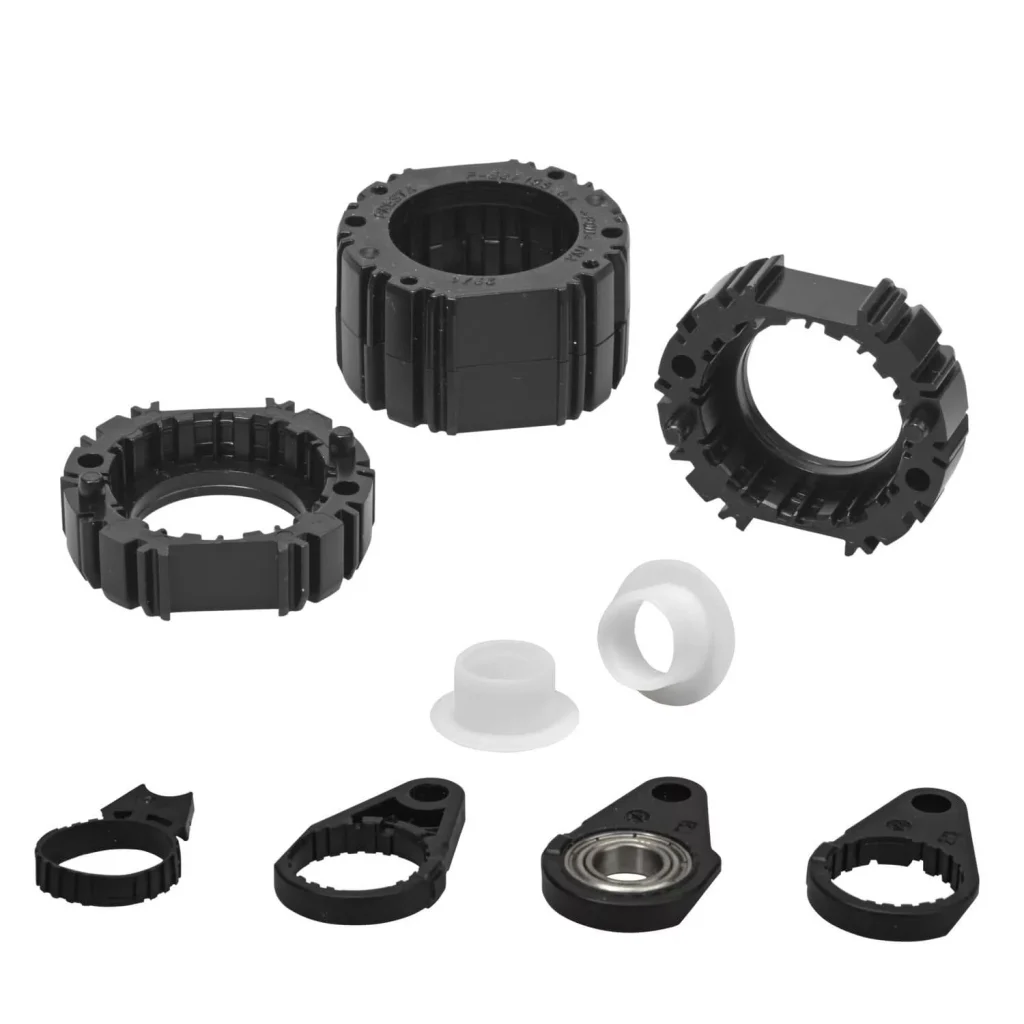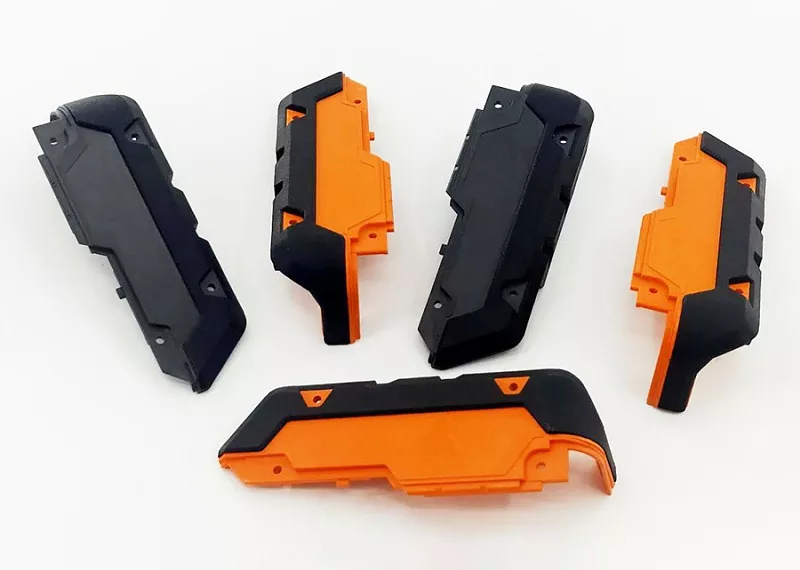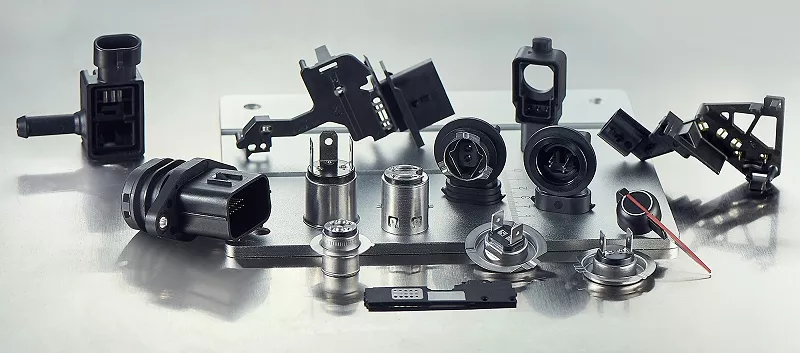- What is the cost of injection molding?
- Is injection molding expensive?
- What is the cost of injection molding?
- The process used
- Molding Costs
Injection molding is a method of molding industrial products. Rubber injection molding and plastic injection molding are usually used. Injection molding can also be divided into injection molding and compression molding. And die-casting. An injection molding machine (abbreviated as an injection molding machine or injection molding machine) is the main molding equipment for making plastic products of various shapes from thermoplastic or thermosetting materials through plastic molding molds.
What is the cost of injection molding?
A small and simple single-cavity plastic injection mold typically costs between $1,000 and $1,000. Very large or complex molds can cost up to $100,000 or more. A typical mold for simple parts costs about $20,000, small enough to hold in your hand.
Don’t forget that the price of a mold is just the beginning. The cost of raw materials, operations, and ongoing maintenance must also be considered to determine the overall plastic injection molding cost for any project.
Is injection molding expensive?
The start-up costs of running a machine on a large scale can be high, but the project’s price will improve as you continue to produce. If you check the unit price, plastic injection molding is one of the cheapest and most cost-effective forms of manufacturing. With injection molding, the more units you make with the mold, the cheaper the unit price.
Injection molding is one of the main processes for manufacturing plastics. It is widely used for mass production of similar parts with tight tolerance requirements. It is a cost-effective and repeatable technology for producing high-quality parts for mass production.
It is a fast and intensive process involving the injection of molten material into a mold at high temperatures and pressure. The melting of the material depends on the scope of the manufacturing project. The most popular materials are various thermoplastics such as ABS, PS, PE, PC, PP, or TPU; metals and ceramics can also be injection molded. The mold consists of a cavity containing the injected molten material and is designed to accurately reflect the final characteristics of the part.
Typically, the primary cost driver for injection molding is the cost of the mold, also known as the tooling cost. The cost of designing and building a mold depends on the production volume required, the part design’s complexity, the mold material, and the process used to build the mold.
A simple, low-volume 3D printed mold can cost as little as $200, while a complex, high-volume mold design can cost as much as $200,000. While there are considerable fixed start-up costs, the variable costs of the injection molding process are low due to low thermoplastic material prices, short cycle times, and reduced labor requirements due to automation and economies of scale. This means that the variable production costs are very low, the process becomes more efficient, and the cost per part decreases as production volumes increase because the costs are spread over hundreds or thousands of parts.

What is the cost of injection molding?
Material selection is another factor that determines the cost of an injection mold. For example, any plastic product made from a fiberglass-filled material will wear out the most common molds. Only molds made of hardened tool steel can withstand injection molding of fiberglass-filled materials.
Depending on the requirements of the final part, a variety of plastics are available for injection molding, including ABS, PS, PE, PC, PP, or TPU.
The cost of purchasing mold materials varies depending on the material selected. The cost of thermoplastic pellets is approximately $1 to $5 per kilogram.
The cost of the material depends on the model’s design, the material selected, and the amount of material used to perform the injection molding process.
Or the cost of services.
The equipment associated with injection molding is usually automated and relies on automation to get the job done. CNC machines, EDM machines, and 3D printers rely on CAD design specifications to produce the mold. Injection molding machines rely on automation to inject material into the mold, and industrial IM machines automatically cool and eject the finished product.
Labor costs include:
Setup/Configuration Costs: Setup labor focuses on the time spent configuring the equipment used to produce molds and finished products.
Repair costs: Repair and maintenance tasks include replacing defective parts and using tools to perform maintenance procedures.
Monitoring Costs: Despite the reliance on automation, machine operators still need to monitor the progress of the injection molding process. The operator’s salary incurred in this process is added to the total injection molding cost.
In in-house production, these costs are included in the labor costs. When a company outsources injection molding, the service provider’s labor and markups are added to the cost of the service.
The process used
Injection molds are typically manufactured in three ways:
CNC machining: CNC machines are the most common tool to manufacture high-precision aluminum and stainless steel molds. CNC machining removes material by rotating the tool and holding the part in place. Machining can produce molds with very complex cavity designs, but they may require multiple tool changes, which will slow down the process and mean that costs will increase as complexity increases. CNC machines are a real tool for industries requiring skilled labor and special spaces, which means many companies outsource mold production to service providers.
Electrical Discharge Machining (EDM): EDM methods are often used to create highly complex mold designs that are difficult to replicate using standard machining methods.EDM involves using workpieces and tool electrodes to create the desired mold shape. The tool electrode and workpiece electrode are separated by a dielectric fluid and are subjected to a voltage that causes a repetitive current discharge. The discharge is responsible for shaping the workpiece electrode into the final mold. Edm is very precise and usually does not require any additional post-processing. Like CNC machining, EDM is an industrial process many companies outsource to job shops.
3D printing is a powerful solution for quickly and cost-effectively manufacturing injection molds. It requires limited equipment while saving CNC time and skilled operators for other high-value tasks. Manufacturers can benefit from the speed and flexibility of in-house 3D printing to create molds that can be used in desktop and industrial molding machines. In addition, product development benefits from the ability to iteratively design and test end-use materials before investing in hard molds for mass production. Stereolithography (SLA) 3D printing technology is an excellent choice for injection molding. A high surface finish, high accuracy of mold transfer to the final part, and easy demolding characterize it. 3D printed parts produced by stereolithography are chemically bonded, making them completely dense and isotropic.
Molding Costs
Material selection and part weight
The plastic material chosen for a plastic part is not only critical to the function of the part but also has a significant impact on the cost of manufacturing the part. The cost of plastic raw materials can range from $1 to $25 per pound. Therefore, care should be taken in the design of plastic parts to reduce the weight of the part as much as possible.
Choosing the right type of plastic can also help speed up a part’s cycle time or productivity, thus reducing the overall cost. For small parts, the material cost has little impact on unit price, but productivity has a large impact. For larger and heavier parts, the material cost significantly impacts unit price and productivity.
Material part cost = plastic material price x pounds of part weight.

Cycle Time and Mold Cavities
“Cycle time” is used in our industry for injection molding and CNC machining. It is simply the time it takes for a machine to complete a production cycle. The entire injection molding cycle time consists of the following steps:
1. Pressurization time
2. Injection fill time
3. Injection packing/holding time
4. Skill cooling time
5. Mold opening time
6. Part ejection or removal time
7. Cycle time (only if the machine operator must operate the part in semi-automatic mode)
8. 11 considerations to help you reduce manufacturing costs for injection molding design:
9. Eliminate undercuts.
10. Remove unnecessary features.
11. Use the core-cavity method.
12. Reduce the appearance of smoothness and appearance
13. Design from material parts
14. Modify and reuse the mold.
15. Pay attention to the DFM analysis
16. Use multi-cavity or series molds
17. Select the make-to-order option.
18. Consider part size.
While the cost of injection molding appears to be higher than CNC machining and 3D printing, its scale and ability to make thousands of parts make it a cost-effective solution for mass production. Determining the cost of injection molding is a combination of several factors. The main determinant of molding cost is the time required to produce the mold. This means that the more complex the geometry of the part, the higher the manufacturing cost. Simple parts without undercuts or higher surface finishes will be the most affordable.
In addition to unit cost, materials should also be considered. Many plastics overlap in strength and function, but some are inherently easier to mold, reducing the part’s cost. You can contact us directly on our website or send us a document.





